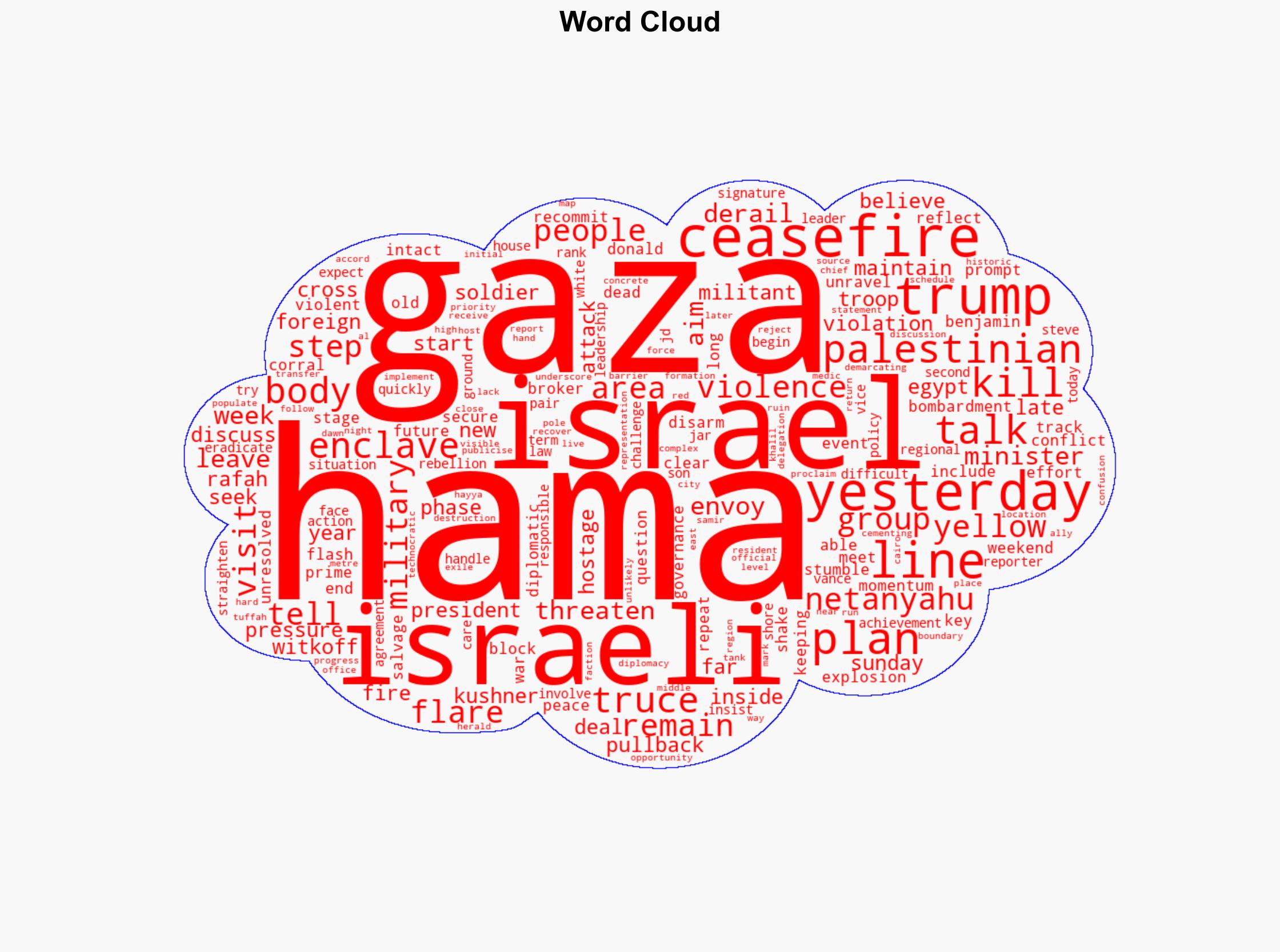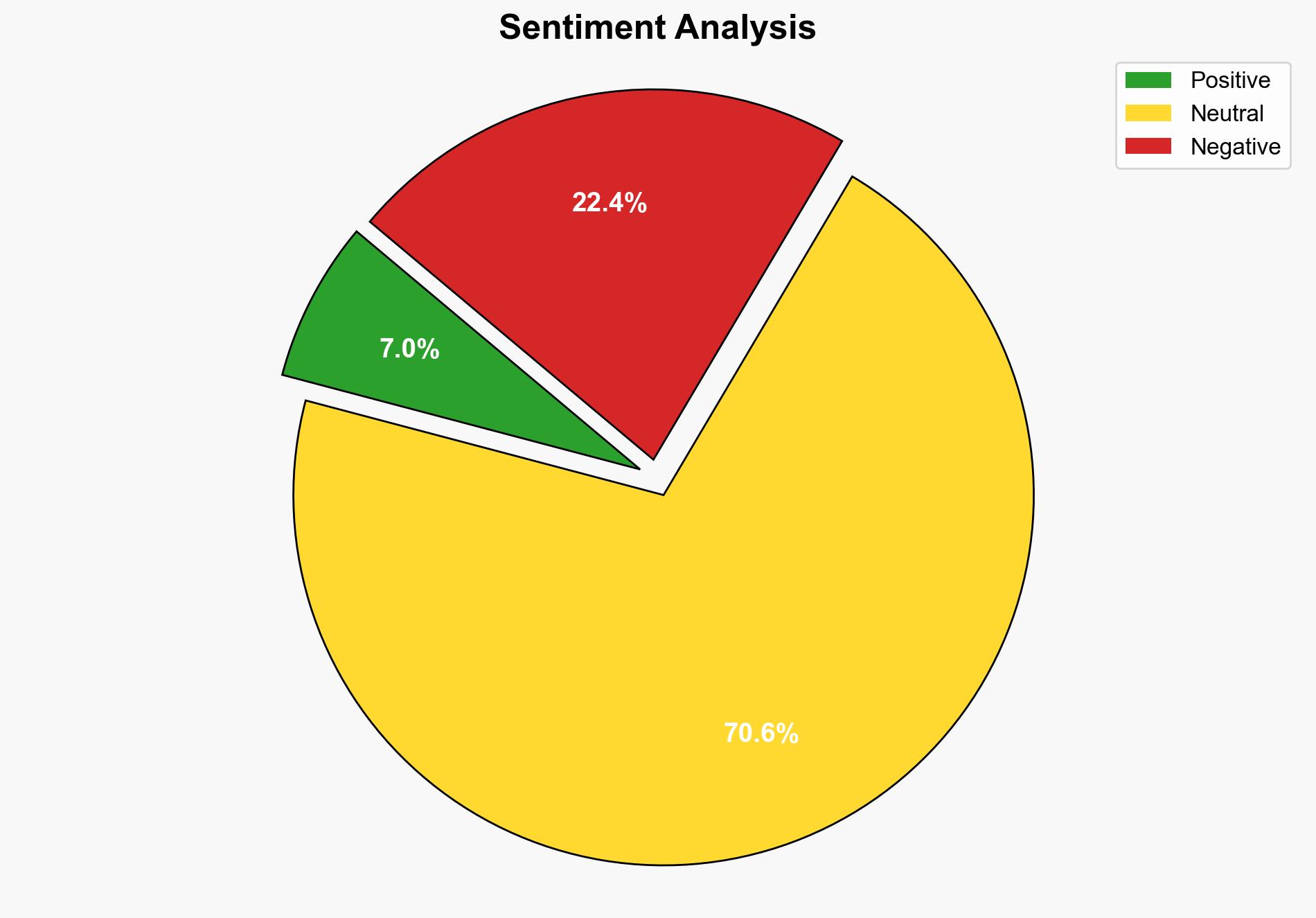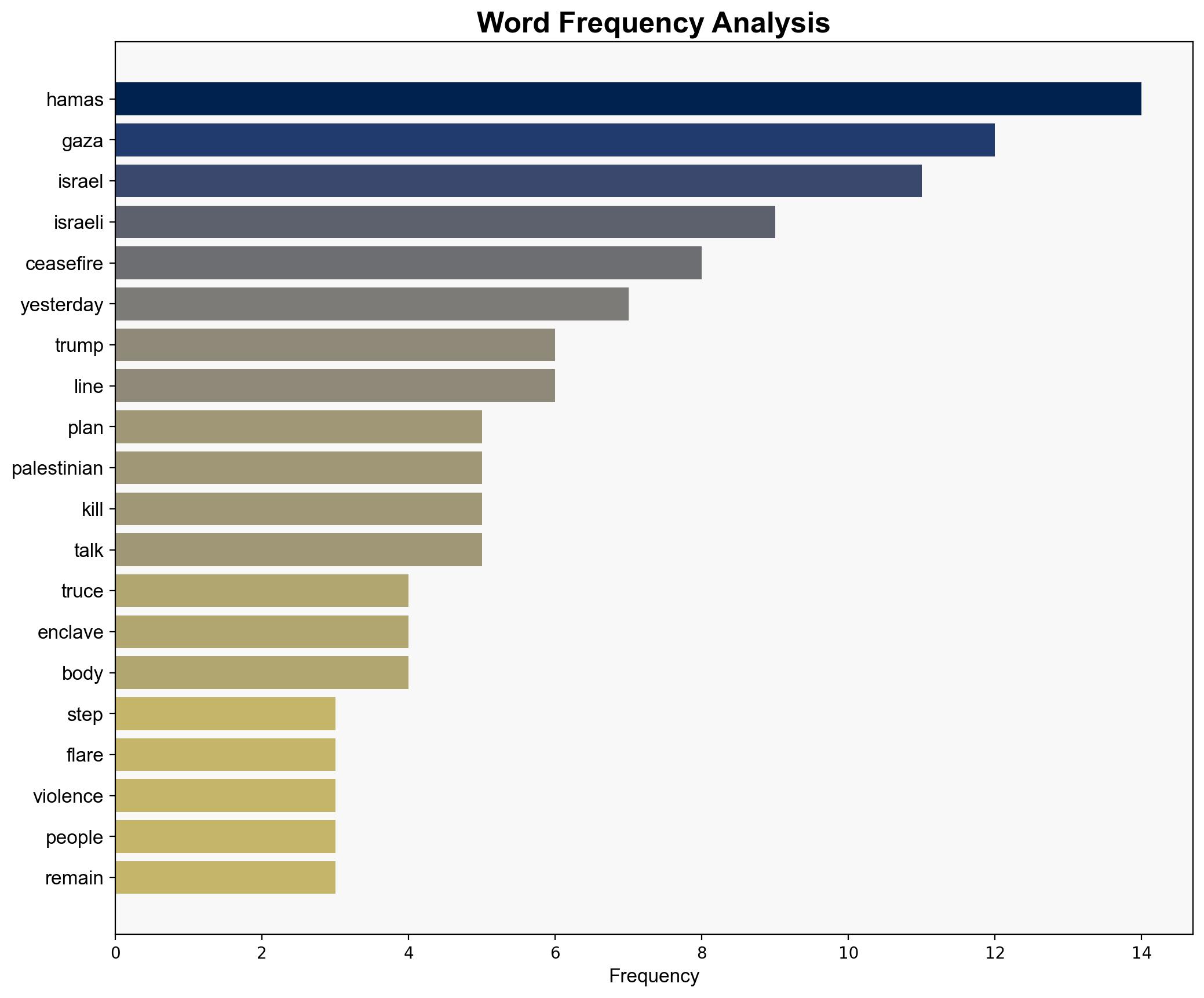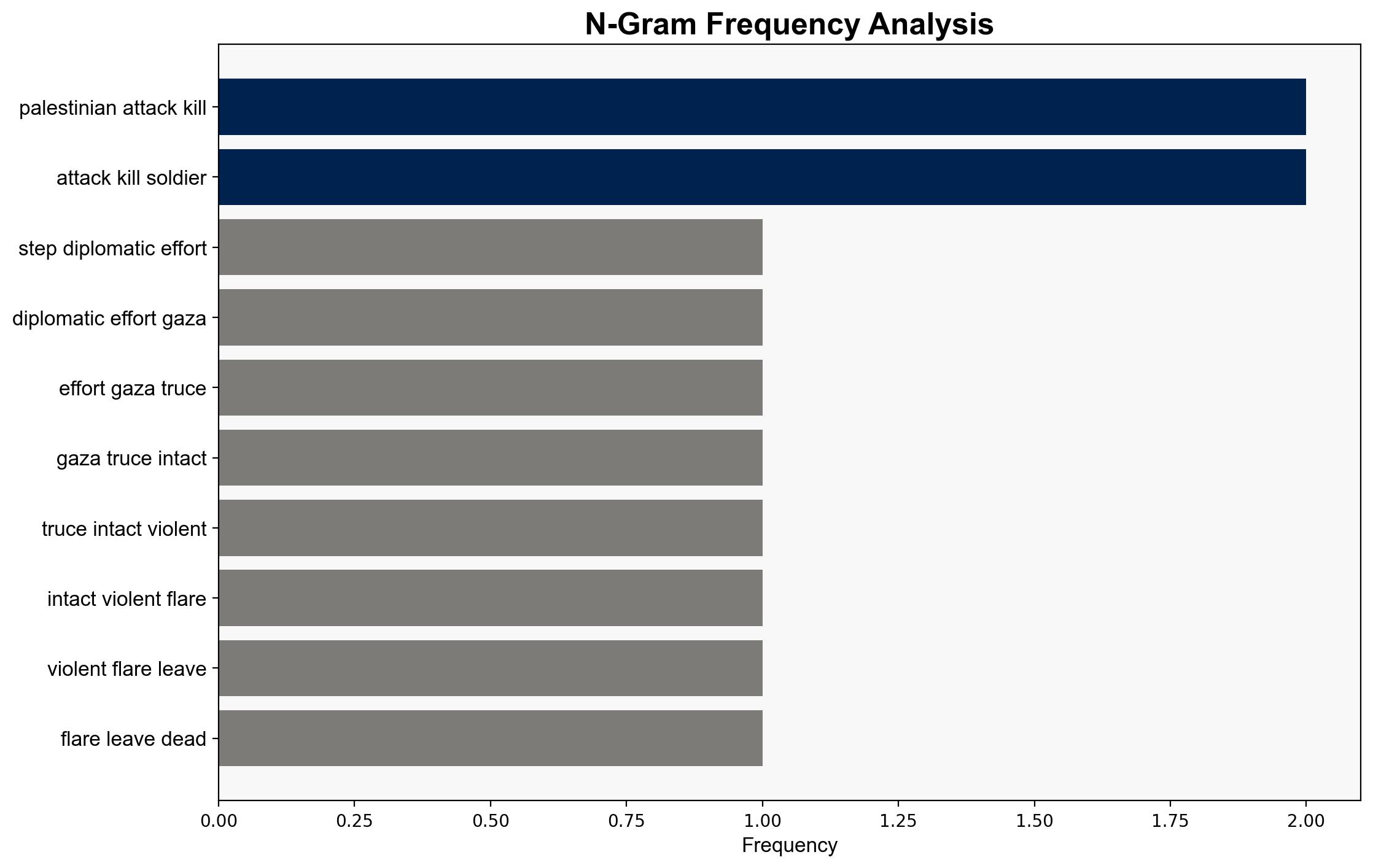US steps up diplomatic efforts to keep Gaza truce intact – Independent.ie
Published on: 2025-10-21
Intelligence Report: US steps up diplomatic efforts to keep Gaza truce intact – Independent.ie
1. BLUF (Bottom Line Up Front)
The most supported hypothesis is that the US diplomatic efforts are primarily aimed at maintaining regional stability and preventing further escalation between Israel and Hamas. Confidence level: Moderate. Recommended action: Continue diplomatic engagement while preparing contingency plans for potential ceasefire breakdowns.
2. Competing Hypotheses
1. **Hypothesis A**: The US is genuinely committed to maintaining the Gaza ceasefire to ensure regional stability and prevent further violence.
– **Supporting Evidence**: The involvement of high-level US envoys and the prioritization of the ceasefire by the US administration suggest a strong commitment to maintaining peace.
– **SAT Applied**: Analysis of Competing Hypotheses (ACH) 2.0 indicates that this hypothesis aligns with the US’s historical interest in Middle Eastern stability.
2. **Hypothesis B**: The US’s efforts are primarily driven by domestic political considerations, using the ceasefire as a foreign policy achievement.
– **Supporting Evidence**: The emphasis on the ceasefire as a “signature foreign policy achievement” and its timing during a politically sensitive period for the US administration suggest a potential domestic agenda.
– **SAT Applied**: Bayesian Scenario Modeling shows a moderate probability that domestic politics influence the US’s actions, given the current political climate.
3. Key Assumptions and Red Flags
– **Assumptions**:
– The US has sufficient leverage over both Israel and Hamas to influence the ceasefire’s maintenance.
– Both parties are equally committed to the ceasefire.
– **Red Flags**:
– The lack of clear boundaries and ongoing violence suggests potential miscommunication or lack of control.
– The involvement of multiple actors (e.g., Egypt, Hamas factions) complicates the situation and could lead to misaligned objectives.
4. Implications and Strategic Risks
– **Patterns**: Repeated flare-ups indicate a fragile ceasefire, with potential for rapid escalation.
– **Cascading Threats**: A breakdown in the ceasefire could lead to broader regional instability, affecting neighboring countries and international relations.
– **Potential Escalation**: Continued violence could result in increased military engagement, drawing in additional regional and global powers.
5. Recommendations and Outlook
- Enhance diplomatic efforts by involving additional regional stakeholders to strengthen the ceasefire framework.
- Develop contingency plans for potential ceasefire breakdowns, including humanitarian aid and evacuation strategies.
- Scenario Projections:
- Best Case: Ceasefire holds, leading to long-term peace negotiations.
- Worst Case: Ceasefire collapses, resulting in full-scale conflict.
- Most Likely: Periodic violence continues, with intermittent diplomatic interventions.
6. Key Individuals and Entities
– Benjamin Netanyahu
– Donald Trump
– Steve Witkoff
– Jared Kushner
– Khalil al-Hayya
7. Thematic Tags
national security threats, regional focus, Middle East diplomacy, ceasefire negotiations




